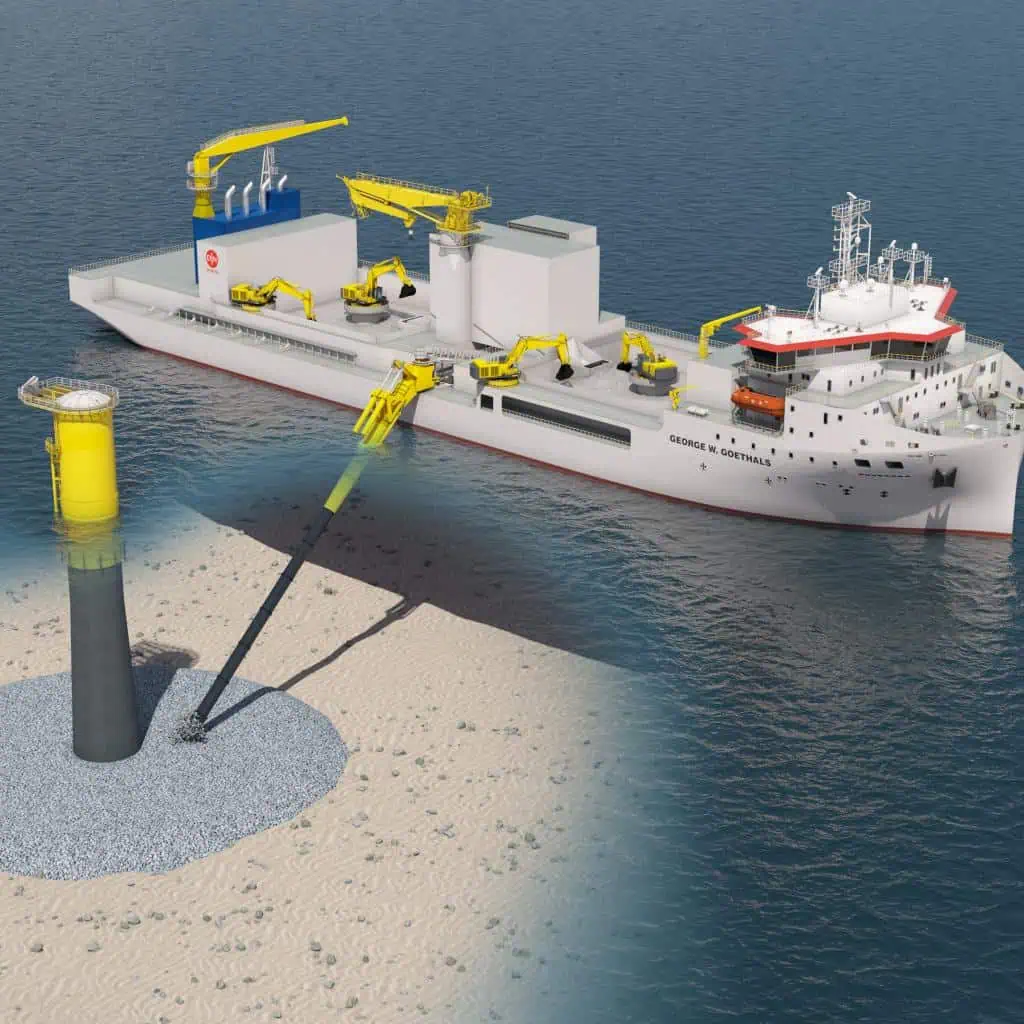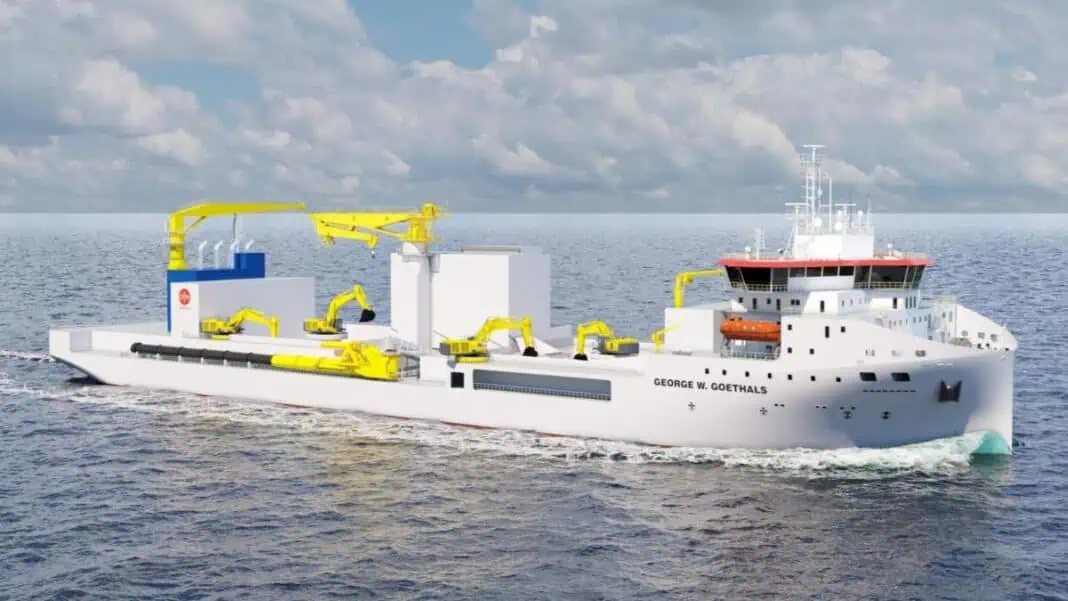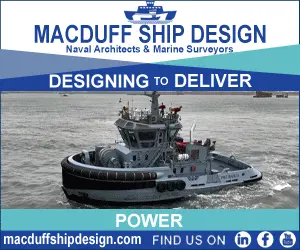With global demand rising for the protection of subsea infrastructure vital to energy production and data transmission, Jan De Nul Group has ordered a new, state-of-the-art subsea protection vessel, the George W. Goethals. Purpose-built to safeguard critical offshore assets, the vessel will reinforce Jan De Nul’s commitment to delivering reliable, sustainable, and future-ready solutions for the offshore industry.
Thousands of kilometres of subsea cables lie on the ocean floor, transporting electricity between countries, connecting offshore wind farms to the mainland, and carrying the bulk of international data traffic. But they are vulnerable to damage and, due to their strategic importance, potential targets for sabotage. With a new state-of-the art rock installation vessel, Jan De Nul is taking action to enhance the protection of this critical infrastructure.

The new vessel, named George W. Goethals, will primarily focus on projects in the energy sector. With numerous energy projects under development in the North Sea and Southeast Asia, these regions will form the core of her operational activity. The vessel has a capacity of up to 37,000 tonnes. With a state-of-the-art flexible vertical fall pipe and an inclined fall pipe system, she can install extra-large rocks to water depths of up to 400 meters.
The George W. Goethals will become the third rock installation vessel above 30,000 tonnes in the fleet of Jan De Nul. Designed entirely in-house, the vessel reflects the company’s vast experience in protecting offshore infrastructure.
Philippe Hutse, Director Offshore Energy at Jan De Nul said “Decades of hands-on experience have given us deep expertise in subsea rock installation. We have applied this knowledge throughout the vessel’s design. The collective capacity of our subsea rock installation fleet now surges beyond 100,000 tonnes. This investment will strengthen our leading position in the industry.”
“A cutting-edge vessel like this represents a major investment and a carefully considered decision. As World Builders, we are fully committed to create a reliable energy system worldwide. Protecting the infrastructure that supports offshore energy production and transmission is essential to achieve this goal. With this new vessel, we are shifting into a higher gear to meet that challenge head-on.”
Besides the new rock installation vessel, Jan De Nul is also building two extra-large cable-laying vessels, the Fleeming Jenkin and the William Thomson. Each vessel will have a cable-carrying capacity of 28,000 tonnes—more than any other vessel currently on the market. They are designed to install cables over longer distances with fewer subsea connections, making them ideal for interconnector cables that link energy grids across the globe. These cables enable electricity to flow quickly from areas of surplus to areas of demand, enhancing the reliability of renewable energy.












